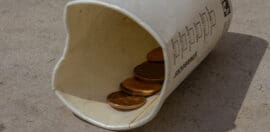“It’s completely out of whack”: Australia’s rental system reaches new heights of unaffordable

24 November 2021 at 5:20 pm
Low income Aussies are being completely priced out of the rental market, new research reveals
Rental stress is once again on the rise, with new analysis finding that housing affordability is worse than pre-pandemic levels in some areas of the country.
The annual Rental Affordability Index (RAI) for 2021, released on Wednesday, revealed that there is currently no affordable rental housing in Australia for single pensioners, people on jobseeker, pensioner couples and single part-time working parents also on benefits, apart from in regional South Australia.
Hobart was once again named the least affordable city to rent in Australia, with the average household income ($67,900 gross per annum) putting 34 per cent of their income towards rent.
This is well beyond the housing stress threshold of 30 per cent, meaning that after paying rent, there is not enough remaining income to spend on other primary needs such as food, medical needs, heating or cooling or children’s education.
But the report, which is compiled by National Shelter, SGS Economics & Planning, the Brotherhood of St. Laurence and Beyond Bank Australia, found that renters on the mainland of Australia weren’t much better off.
Adelaide came in second for least affordable cities, where households pay 27 per cent of their income on rent. The ACT and Sydney however, remained the least affordable locations for low-income renters.
In Canberra and Sydney, a single person on JobSeeker now pays 113 per cent and 110 per cent of their income on rent.
Rental affordability increases to pre-pandemic levels
In 2020, the introduction of Coronavirus supplements saw rental affordability improve, due to people on lower incomes having larger allowances.
The end of these government stimulus packages has meant lower-income households are now back at the same stress levels as they were pre-pandemic. Perth, Hobart and Brisbane recorded worse rental affordability than before the pandemic.
Greater Melbourne was the only city to see an improvement in rent prices, improving 7.3 per cent, with the average household now paying 20 per cent of their income on rent.
Adrian Pisarski, the CEO of National Shelter, told Pro Bono News that it was important to note that this improvement was only seen in Melbourne’s inner-urban areas, where many foreign workers and international students lived pre-pandemic.
Rent prices for larger properties on the outer edges of the city increased as people sought spaces that could accommodate working from home arrangements.
But he said that when migration resumed, it was probable that rental affordability in Melbourne’s CBD would go back to being unaffordable, and rent in the suburbs would become even more expensive.
Pandemic pushes up prices in regional areas
The extended lockdowns across Australian capital cities saw thousands of people (predominantly on higher incomes) relocate to regional areas. This has meant that rental affordability in these areas has significantly deteriorated.
Regional areas such as Wollongong and the Gold and Sunshine Coasts are now unaffordable for households earning under $80,000 per annum.
Pisarski said that with the average regional income sitting at around $70,000 a year, many locals were now completely priced out of the rental market.
“There is pretty much nothing affordable up the entire east coast of Australia,” he said.
“What we need as a solution is much more social and affordable housing in those regional areas of Australia, because at the moment, that’s something that’s really lacking.”
Affordable housing advocates have long campaigned for a national housing plan that includes 500,000 new low-cost rentals, the number of homes needed to meet the demand for affordable housing.
Pisarski said that the rapidly rising rental market teamed with low wage growth and stagnant income support rates, meant that it was now critical the federal government stepped in.
“It may be time to call for rent controls to put a brake on unsustainable rents, at the very least Commonwealth Rent Assistance needs to rise by 50 per cent to allow households receiving it to retain a level of affordability,” he said.
“The federal government really needs to have a long, hard look at the whole housing system, because it is completely out of whack.
“I’ve been in this game for nearly 40 years now, and I just think as an advocate, I’ve been a failure…because we are now seeing more and more people frankly becoming homeless in one form or another because of this system.”
Ellen Witte, partner at SGS Economics and Planning, added that as part of the economic recovery out of the pandemic, investment in social housing had to be a priority.
“As part of the economic recovery out of the pandemic, we need structural adjustments to welfare payments and to curb increases in rent levels and limit rent increases to inflation,” Witte said.
“We need to prioritise those most in need and create jobs – expanding the social and affordable housing stock will achieve that.”








These percentages seem quite low at 27-34% of income. Where I live, a regional area outside of Sydney, it’s at least $300 per week for an apartment or granny flat for a single person, meaning a low-income earner like myself is paying half of my income on rent. (Luckily I live in a share house right now, it seems to be the only affordable option nowadays)